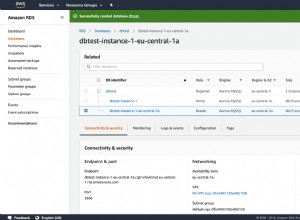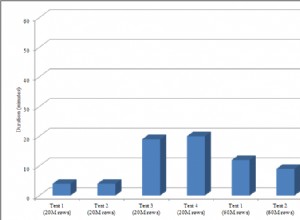Tôi đã tạo một bài kiểm tra so sánh OFFSET, con trỏ và ROW_NUMBER (). Ấn tượng của tôi về ROW_NUMBER (), rằng nó sẽ nhất quán về tốc độ bất kể bạn đang ở đâu trong tập kết quả, là chính xác. Tuy nhiên, tốc độ đó chậm hơn đáng kể so với OFFSET hoặc CURSOR, theo ấn tượng của tôi, là tốc độ khá giống nhau, cả hai đều giảm tốc độ càng về cuối kết quả mà bạn đạt được.
Kết quả:
offset(100,100): 0.016359
scroll(100,100): 0.018393
rownum(100,100): 15.535614
offset(100,480000): 1.761800
scroll(100,480000): 1.781913
rownum(100,480000): 15.158601
offset(100,999900): 3.670898
scroll(100,999900): 3.664517
rownum(100,999900): 14.581068
Tập lệnh thử nghiệm sử dụng sqlalchemy để thiết lập bảng và 1000000 hàng dữ liệu thử nghiệm. Sau đó, nó sử dụng con trỏ psycopg2 để thực thi từng câu lệnh SELECT và tìm nạp kết quả bằng ba phương pháp khác nhau.
from sqlalchemy import *
metadata = MetaData()
engine = create_engine('postgresql://scott:[email protected]/test', echo=True)
t1 = Table('t1', metadata,
Column('id', Integer, primary_key=True),
Column('d1', String(50)),
Column('d2', String(50)),
Column('d3', String(50)),
Column('d4', String(50)),
Column('d5', String(50))
)
if not engine.has_table('t1'):
conn = engine.connect()
t1.create(conn)
# 1000000 rows
for i in range(100):
conn.execute(t1.insert(), [
dict(
('d%d' % col, "data data data %d %d" % (col, (i * 10000) + j))
for col in range(1, 6)
) for j in xrange(1, 10001)
])
import time
def timeit(fn, count, *args):
now = time.time()
for i in xrange(count):
fn(*args)
total = time.time() - now
print "%s(%s): %f" % (fn.__name__, ",".join(repr(x) for x in args), total)
# this is a raw psycopg2 connection.
conn = engine.raw_connection()
def offset(limit, offset):
cursor = conn.cursor()
cursor.execute("select * from t1 order by id limit %d offset %d" % (limit, offset))
cursor.fetchall()
cursor.close()
def rownum(limit, offset):
cursor = conn.cursor()
cursor.execute("select * from (select *, "
"row_number() over (order by id asc) as rownum from t1) as foo "
"where rownum>=%d and rownum<%d" % (offset, limit + offset))
cursor.fetchall()
cursor.close()
def scroll(limit, offset):
cursor = conn.cursor('foo')
cursor.execute("select * from t1 order by id")
cursor.scroll(offset)
cursor.fetchmany(limit)
cursor.close()
print
timeit(offset, 10, 100, 100)
timeit(scroll, 10, 100, 100)
timeit(rownum, 10, 100, 100)
print
timeit(offset, 10, 100, 480000)
timeit(scroll, 10, 100, 480000)
timeit(rownum, 10, 100, 480000)
print
timeit(offset, 10, 100, 999900)
timeit(scroll, 10, 100, 999900)
timeit(rownum, 10, 100, 999900)




